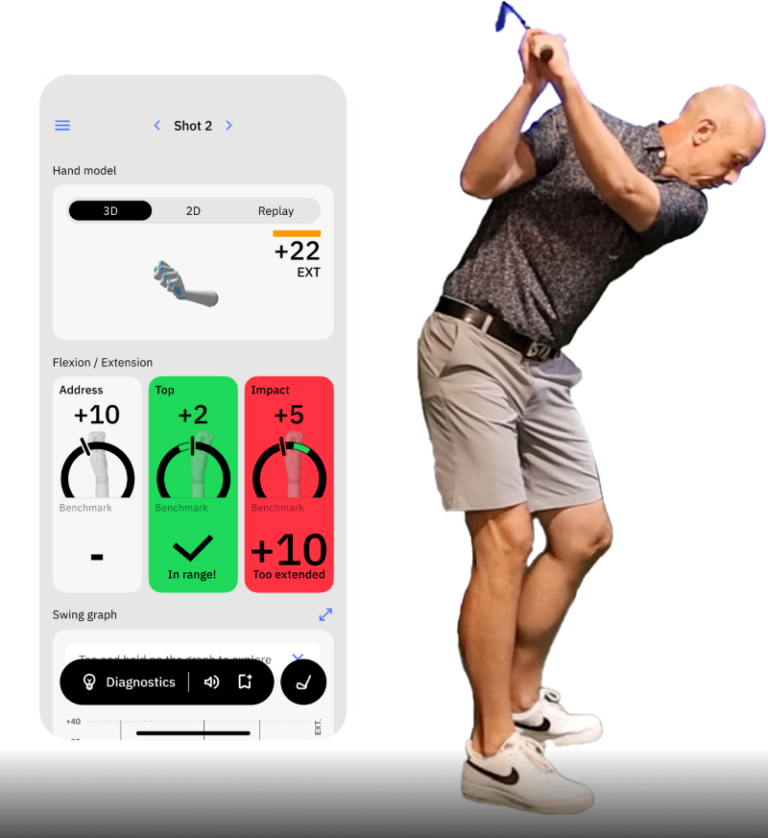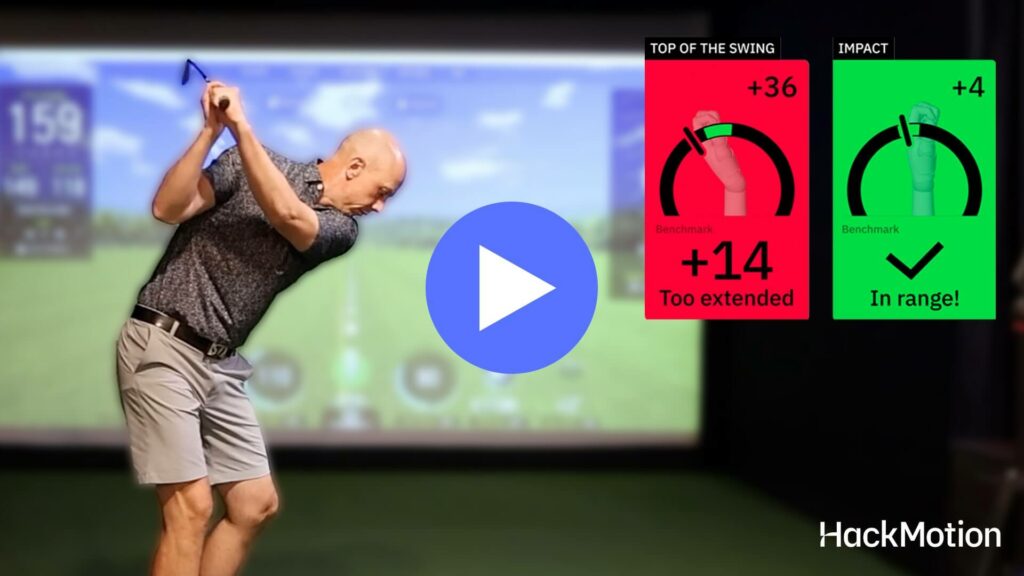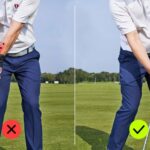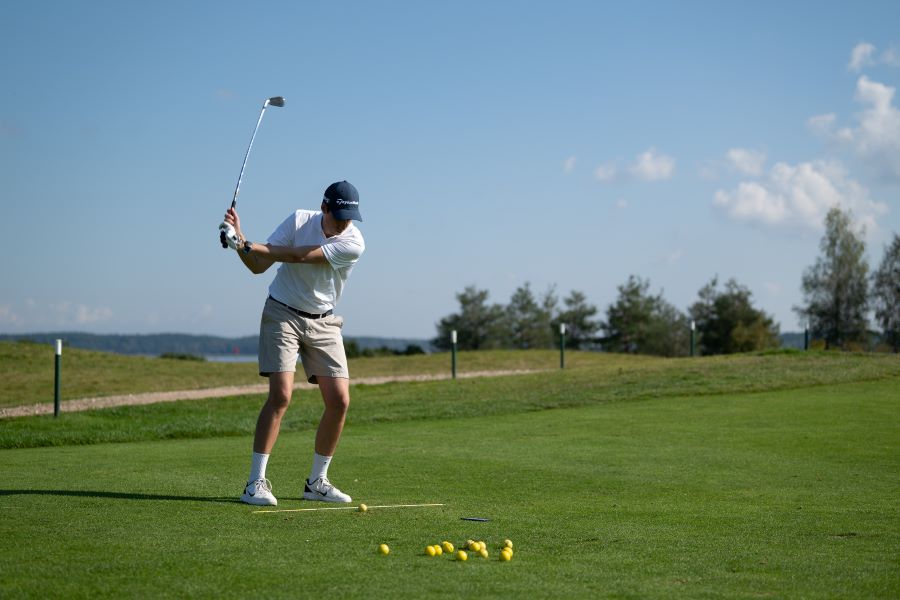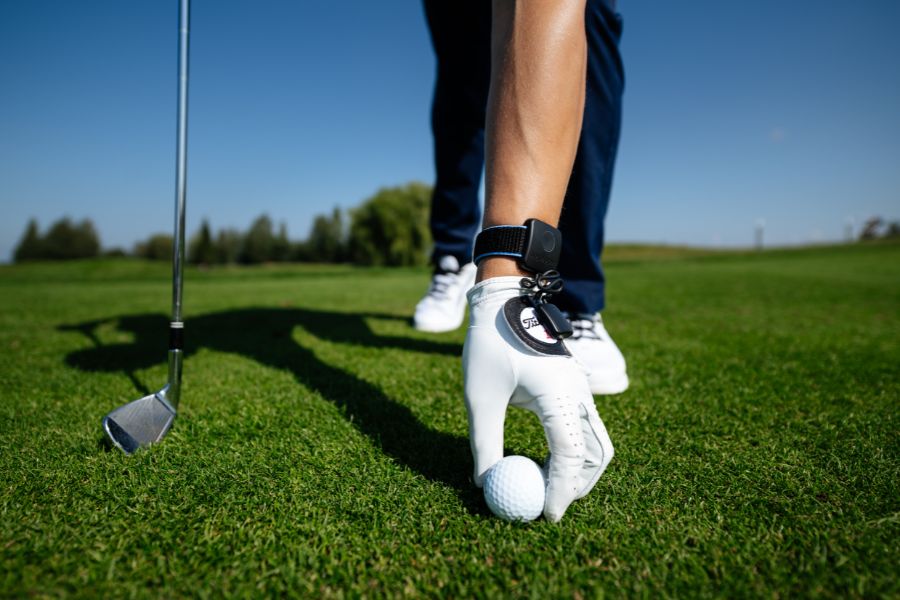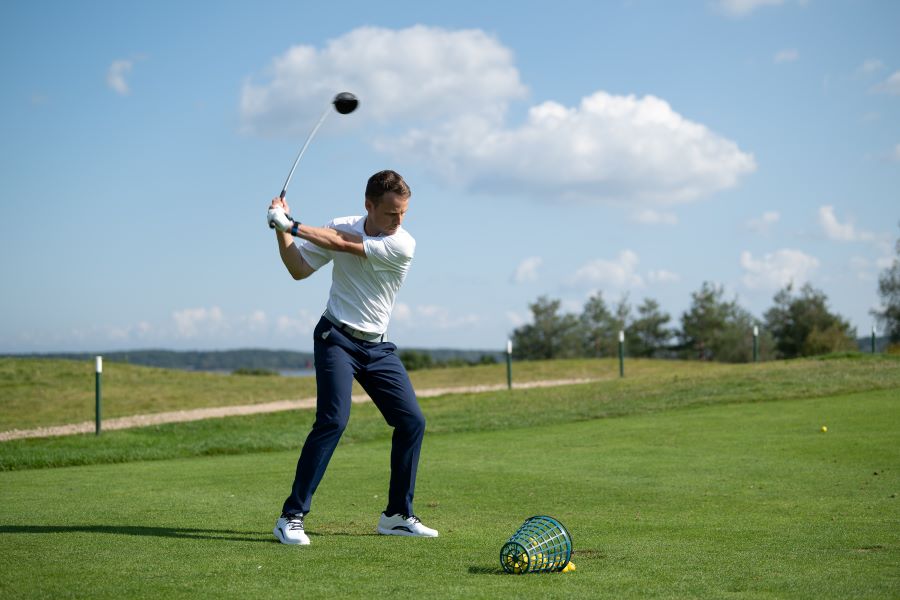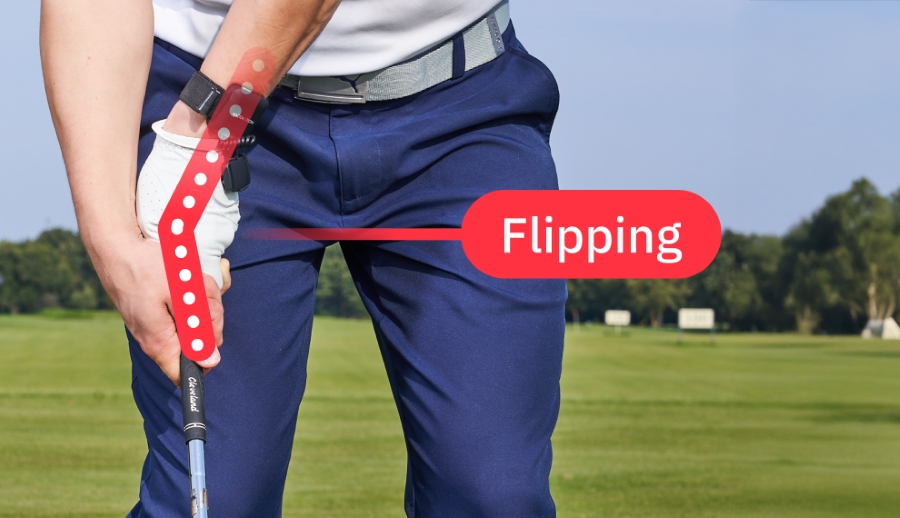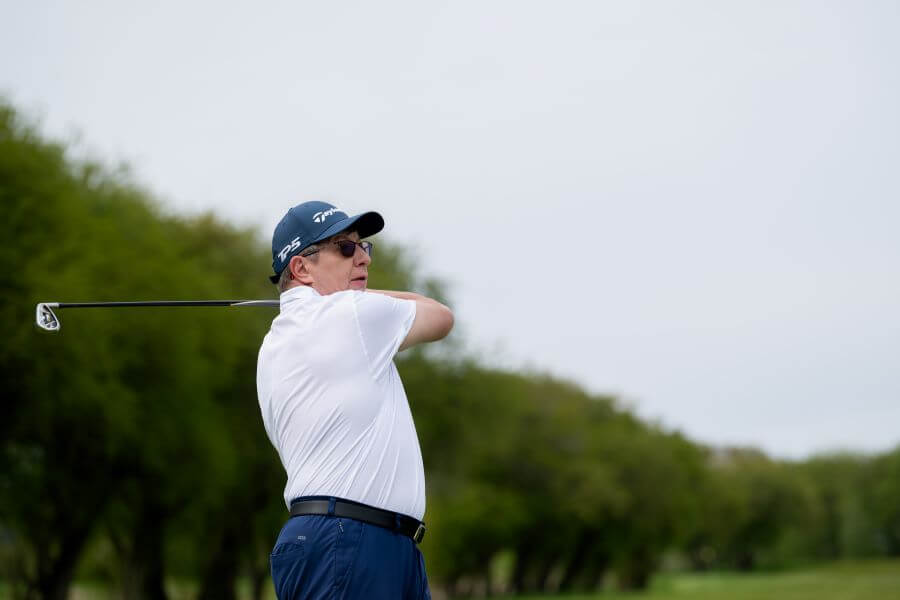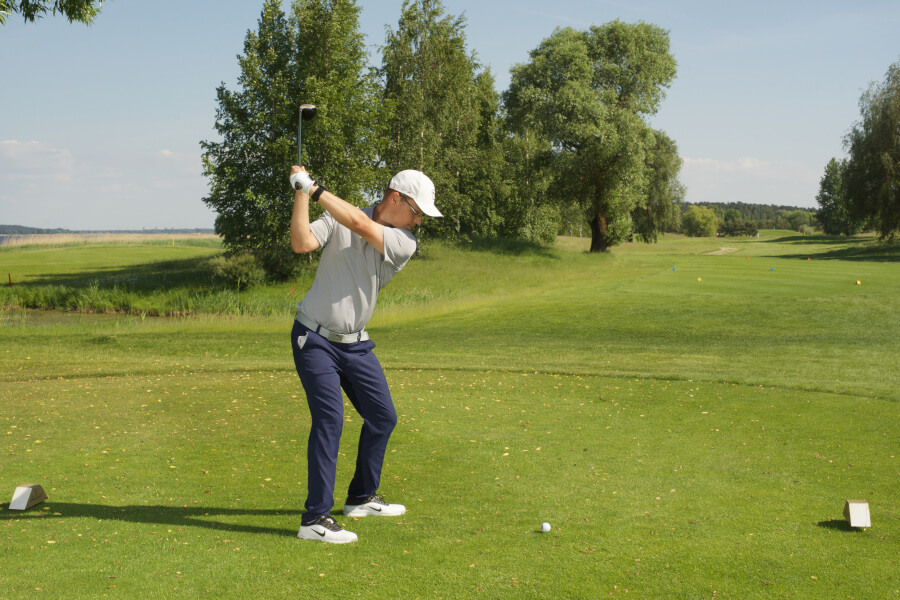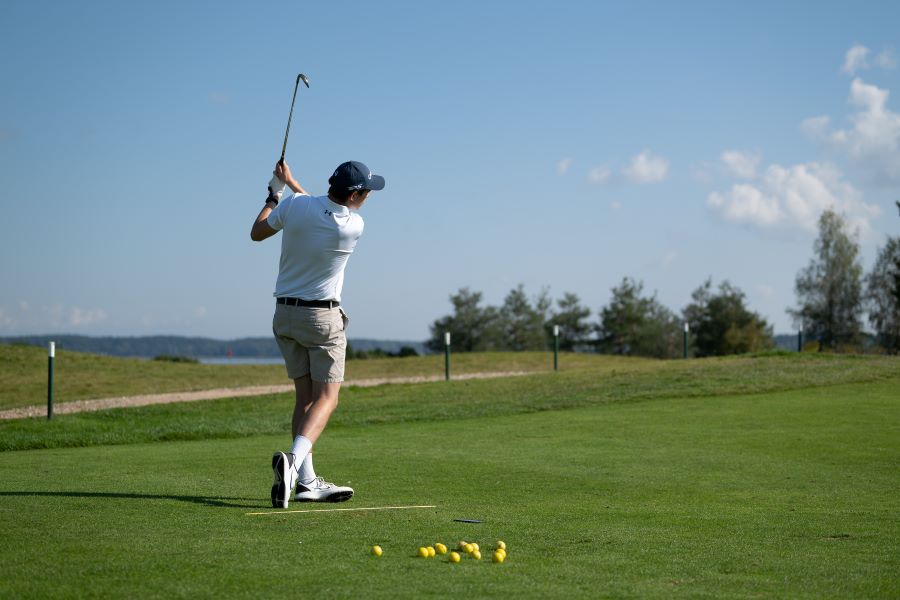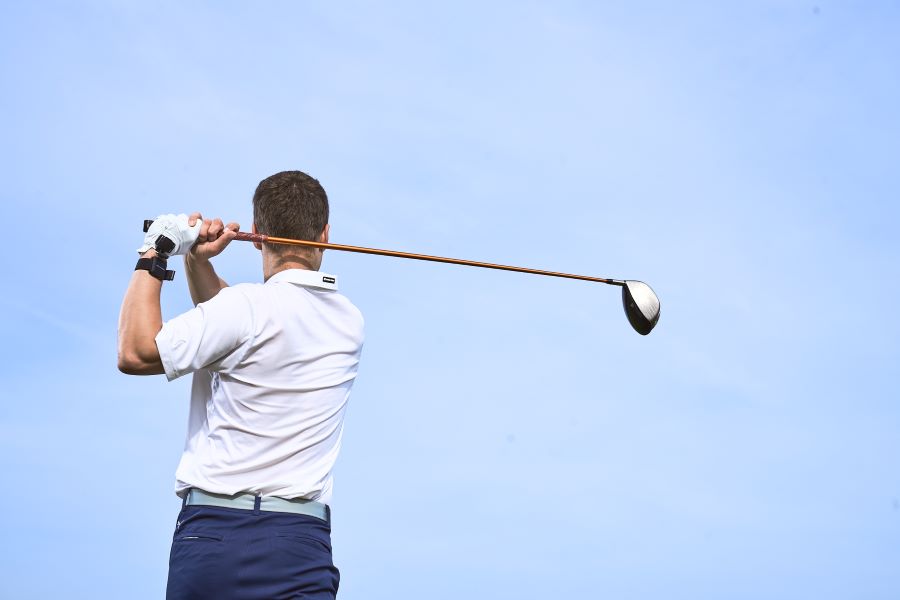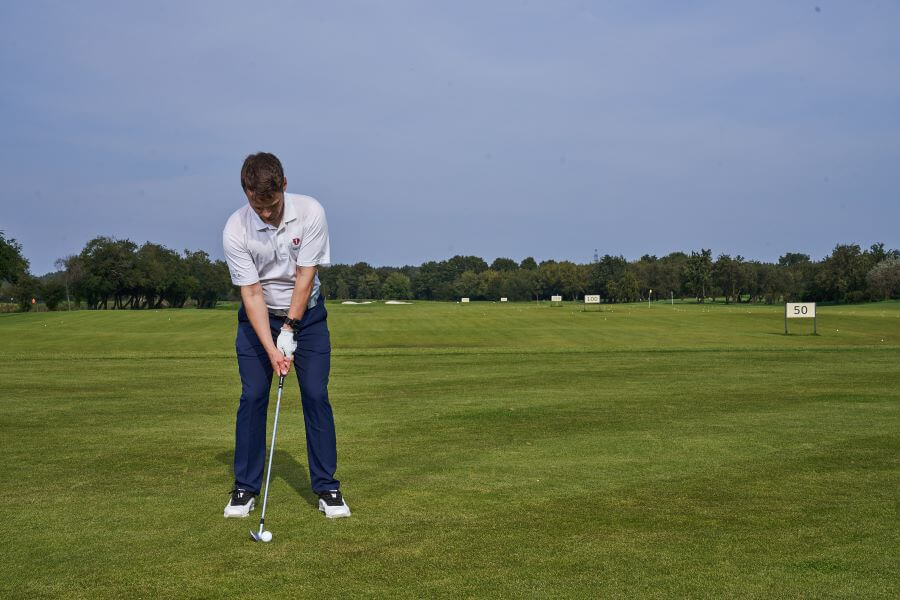How to Stop Overswinging in Golf: 5 Easy Tips That Work
Amateur golfers tend to think that a big swing means more distance and better results. That isn’t always the case.
Overswinging is a common problem, and sometimes a more controlled, shorter golf swing is better for you.
The good news is that you don’t need to reinvent your entire swing to fix it.
With a few adjustments around your wrist action and how you rotate your body, you can learn to control your swing and hit more consistent golf shots.
Key Takeaways
If you want a quick rundown on how to stop overswinging and what is involved in this process. Here are the most important takeaways.
- Tension Kills Control: Too much grip pressure and arm tension leads to a runaway backswing. Soften your grip and think “wide, not long” to stop the club from going too far back.
- Body Turn > Arm Swing: Overswinging often starts when your arms outpace your torso. Build a strong lower-body pivot and rotate fully to support the arms at the top.
- Wrist Hinge Timing Matters: Excessive late wrist hinge pushes the club past parallel. Use drills like the Preset Drill to set your wrists early and stay in control. Check for that flat least wrist position at the top of the backswing.
- Connection Is Key: Keep your arms working with your torso, not against it. The Tees Under the Arms drill trains proper arm-body connection and limits overreach.
Contents
Understanding the Causes of an Overswing
There are four main causes of an overswing in golf. Before you jump into how to fix this overswinging motion, let’s look at the causes likely impacting your game:
- Chasing “Extra” Distance – Many players feel that a bigger backswing automatically leads to longer drives. In reality, once you exceed your natural range of motion, your swing often collapses, making solid contact much harder.
- Lack of Body Rotation – If your lower and upper body don’t rotate effectively, your arms may overcompensate. This often causes the club to travel too far back.
- Poor Wrist Angles at the Top – Excessive wrist hinge or “cupping” can push the club well beyond parallel, resulting in a breakdown of your swing sequence.
- Tension and Instability – Gripping the club too tightly or having poor balance causes you to lose structure in your swing.
Five Tips for a More Controlled Swing
Telling yourself to stop the club sooner in your backswing is often not enough to get the control you need.
Instead, you need some better triggers, thoughts, and actions to try and control the length of the backswing.
Relax your Hands and Arms
Start with releasing the tension in your hands and arms because it’s the easiest thing to fix. Tension in the arms is a leading cause of “runaway” backswing length.
When that tension builds up, it’s nearly impossible to know where your club is positioned in the backswing and if it’s too far, you probably won’t feel it.
To relax your hands and arms, start by softening your grip pressure. Think of your swing as wide rather than long and keep the arms from swinging past parallel.
Actively think about reducing pressure at setup so that it doesn’t build throughout the swing.
Create a Solid Body Turn
Another problem with overswinging is allowing your arms to keep going after your body has stopped turning.
A strong lower body pivot and synchronized torso rotation help keep things more compact and ensure the club doesn’t travel too far back.
Create a pivot station for yourself. You can use an alignment stick next to your trail hip. The goal is to turn your hip behind you without swaying into the rod.
It reminds you to turn your body instead of just lifting the arms. Sometimes it makes sense to think about it as a feeling of coiling around your spine.
Preset the Wrists Early
Do you know how much your wrists are hinging in your backswing? Excessive wrist hinge is a problem that can keep the club moving too far in the backswing.
The Preset Drill is a good one to help you ensure your wrists are set at the right time and you can control the length of your swing.
The “Preset Drill”
- Video Timestamp – 0:34 – 4:30
The “Preset Drill” – Step by Step:
- Address Position: Take your normal address with a mid or short iron.
- Wrist Set: Move just your wrists until the shaft is parallel to the ground (around hip height).
- Check Clubface: The clubface should be tilted slightly down—not pointing straight up.
- Complete the Swing: From this preset position, continue the backswing by turning to the top.
This prevents a late, uncontrolled hinge and helps you feel exactly where your wrists should stop.
Over time, you’ll naturally stop your backswing before it spirals into an overswing.
Keep the Arms Connected
If your arms “disconnect” from your torso in the back swing it’s easy for them to travel too far.
One of the best thoughts you can have to keep the club from travelling too far back and overswinging is to feel the arms are connected or part of the chest turn.
A great drill to work on this is the tees under the arms drill:
Tees (or Towel) Under the Arms
- Video Timestamp – 8:40 – 12:00
Tees (or Towel) Under the Arms Drill – Step by Step:
- Setup: Place a small tee or piece of cloth under each armpit.
- Slow Swings: Take a few controlled swings, keeping the items in place.
- Stay Connected: Focus on a compact motion where your arms and torso rotate together.
- Feedback: If the tees or towel drop, your arms are disconnecting—maintain light pressure to stay in sync.
Manage Wrist Angles with Feedback
If the lead wrist position is cupped or extended at the top of the backswing it could push the club past parallel.
Maintaining a flat lead wrist or a slight flex at the top of the backswing will keep the clubface square and the backswing shorter.
Using HackMotion can help you get real time information on the extension/flexion numbers in your lead wrist.
The goal is to avoid large spikes in extension as you take the club back. One way to do this is with the “No Wrists” takeaway drill.
No Wrist Takeaway Feel
No Wrist Takeaway Feel – Step by Step:
- Setup: Take your normal stance with an iron.
- Thumb Awareness: As you swing back, feel like your thumbs stay away from your body—avoid early wrist hinge.
- Compact Backswing: It may feel shorter than normal, but that’s the point—reduce looseness at the top.
- Consistency Booster: This helps eliminate an overswing and creates better control during transition.
Emphasize a Controlled, Three-Quarter Finish
If you struggle with learning to control the length of the backswing, work on the follow through instead.
It may take your mind off the issues in the backswing and help you focus on a shorter overall motion.
Shorter Follow-Through Drill – Step by Step:
- Setup: Use a mid-iron and take your normal address position.
- Compact Motion: Hit controlled punch shots with a shorter backswing and follow-through.
- Finish Position: Try to finish with the club around chest height—avoid full extension.
- Video Check: Review your swing to ensure you’re staying compact and not overextending.
Frequently Asked Questions
Does Overswinging Increase Distance?
Overswinging in golf does not necessarily increase distance. Most of the time the result is poor contact and inconsistent strikes.
Solid compression and balanced mechanics are better for players looking to increase distance.
Does Overswinging Reduce Accuracy?
Yes. Once you exceed your comfortable range, it’s tough to square the clubface at impact.
You risk hitting shots left, right, fat, or thin, rather than the consistent, straight shots from a controlled move.
What Is the Easiest Way to Stop an Overswing?
To stop overswinging, limit excessive wrist hinge at the top of the backswing. Use tools like HackMotion to track your wrist angles at the top of your backswing.
In addition, improve your body rotation and make sure your arms and body are more connected throughout the golf swing.
Final Thoughts
If your overswing is too long, don’t feel like you have to give up your power and distance. The goal is to harness your power and get your body and arms working together in sync.
This will allow you to hit more consistent and straighter shots. Wearing your HackMotion will help ensure your wrist angles, specifically too much extension or wrist hinge, aren’t causing the issues in your golf game.
